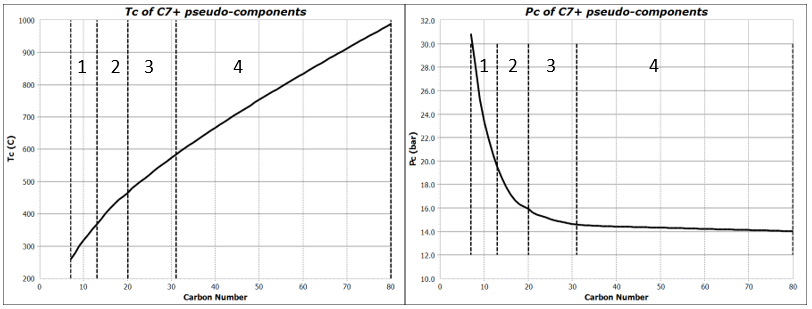The climate debate has made CO2 one of the most talked about substances.
In the oil and gas industry, CO2 has always been important. Most reservoir fluids contain CO2, some in large concentrations, and CO2 is an efficient injection gas for EOR purposes.
The properties of the hydrocarbon components are the same in a CO2 rich fluid as in a fluid with little or no CO2. The plus fraction is therefore, regardless of the content of CO2, to be treated as described in the first TechTalk in the series on Reservoir Fluid Characterization.
The challenges for a CO2 rich fluid are to model the behavior of pure CO2 and how CO2 interacts with hydrocarbon components.
Figure 1 shows a phase diagram for CO2 generated using PVTsim. The boundary line between liquid and solid CO2 is generated using a new option introduced in PVTsim Nova 6 that enables precipitation of pure inorganic solids to be simulated.

The supercritical region of CO2 region is often referred to as a dense phase. In this region, CO2 has a density that is higher than normally seen for supercritical gas components, and the food industry makes use of the high density for extraction purposes. Figure 2 shows the density of CO2 simulated with the GERG-2008 equation for temperatures between 0 and 150 oC and pressures up to 1000 bar. As can be seen, at typical reservoir conditions, CO2 has densities of the same order of magnitude as reservoir oils.

At reservoir conditions, pure CO2 would be in a supercritical state. When modeling CO2 with a classical cubic equation of state it requires a careful choice of binary interaction parameters (kij) for component pairs with CO2. While interaction parameters of zero are appropriate for pairs of hydrocarbons, interaction parameters of the order of 0.1 must be used for CO2-hydrocarbon pairs.
A component for which non-zero kij‘s are used, will tend to create an additional liquid phase with this component as the dominant constituent. This is seen for asphaltenes and also for CO2.
One such example is given in Figure 3, which shows the phase envelope for a Middle East oil and phase envelopes for the oil with 100, 200 and 300 mol% CO2 added [1]. On the low temperature side, the phase envelopes of the oil and of the oil with 100 mol% CO2 added end at low pressure. This is typical for a reservoir fluid dominated by hydrocarbons. With 200 and 300 mol% CO2 added, the phase envelopes bend upwards at lower temperatures. This is an indication of a liquid-liquid split. With more than 300 mol% CO2 added, there would no longer be a saturation point at the reservoir temperature. Two immiscible CO2 rich liquid phases would exist independent of pressure.

Figure 4 shows a detailed phase diagram for the reservoir oil with 300 mole% CO2 added. It is generated with the Phase Mapping option in PVTsim Nova and shows that at low pressure and temperatures below ~ 30 oC, a gas phase exists in addition to the two liquid phases.

The importance of using kij’s > 0 for CO2 is illustrated in Figure 5. It shows the phase envelope for the reservoir oil with 300 mole% CO2 added using CO2 kij’s = ~ 0.1 and using CO2 kij‘s = 0, respectively. With kij‘s of zero, the simulated phase envelope is similar to phase envelopes seen for reservoir fluids dominated by hydrocarbons. This shows that CO2 kij‘s > 0 are required to model the liquid-liquid split occurring for high CO2 concentrations as is illustrated in Figure 3. It is, on the other hand, a reminder that kij’s of zero should be used for hydrocarbon pairs as kij’s > 0 for fluids dominated by hydrocarbons may introduce false simulated liquid-liquid splits. This was emphasized in the first TechTalk in the series on Fluid Characterization.

Reference
[1] Lindeloff, N. Mogensen, K., Pedersen, K.S., Tybjerg, P., Investigation of Miscibility Behavior OF CO2 rich Hydrocarbon Systems – With Application for Gas Injection EOR, SPE-166270-MS, presented ar SPE ATCE, New Orleans, September 29 – October 3, 2013.



